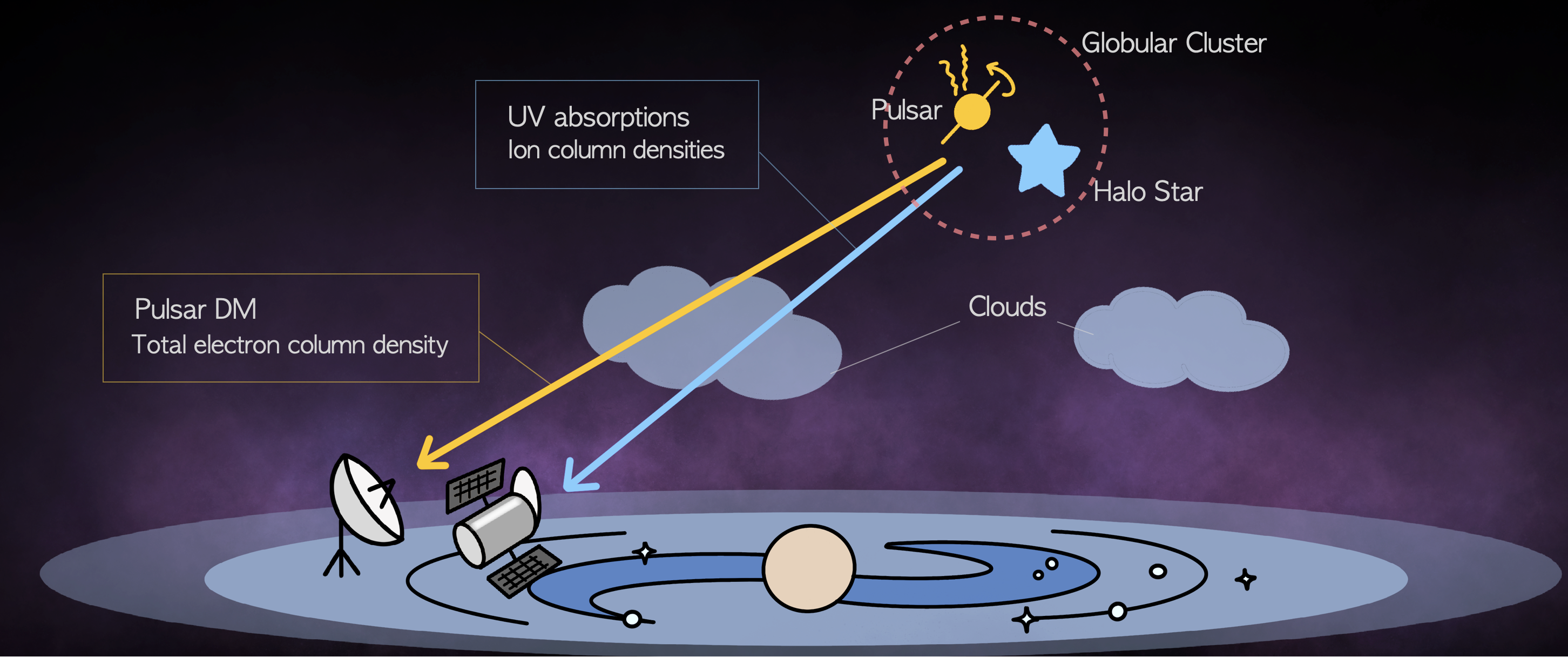Milky Way CGM
Probing the gaseous halo of the Milky Way
In Seattle, a city famous for its cloudy and rainy days during much of the year, and where I am doing my PhD, I often reflect on the impact of the atmosphere on the environment and life below. Clouds often form dynamic patterns — sometimes scattered in patches, other times covering the entire sky. While observing these skies, I often find myself imagining clouds stretching across the entire Milky Way’s sky and what the “weather” of our galaxy might look like.
Nature of the Milky Way Disk-Halo Interface
The interface between the galactic disk and halo, known as the disk-halo interface (DHI), is a dynamic region where gas accretion, ejection, and recycling interplay. Despite its critical role in galaxy evolution, studying this very inner region of the circumgalactic medium (CGM) has been challenging due to its small scale (~few kpc) compared to the entire CGM (~few hundred kpc). The Milky Way is an ideal laboratory for investigating the DHI, owing to ample observations with high data quality and spatial resolution.
Understanding gas accretion and recycling at the DHI is critical for unraveling the processes driving galaxy evolution. Key questions include: How does halo gas cool and accrete onto the star-forming disk? How does metal-poor gas survive and fuel star formation as observed in stellar populations? And how is gas ejected by feedback processes recycled back to the disk?
Metallicity serves as an excellent tracer of gas flows, their mixing, and origins; however, measuring metallicity of ionized gas remains challenging, primarily due to difficulties in constraining the amount of ionized hydrogen. In my recent work (Choi et al. 2024), I measured and mapped the metallicity of ionized gas clouds at the Milky Way’s DHI using halo star-pulsar pairs, which provide precise ionizaton corrections. By analyzing UV spectra available from MAST, I determined ion content (metals) from absorption spectroscopy of halo stars, mostly observed with HST/COS and HST/STIS. The ionized gas content (electron column density) was constrained by the dispersion measures (DMs) of pulsars that lie in the same globular clusters as these UV-bright halo stars (see the schematic below).
This study reveals a large scatter in metallicity values (0.04–3.2 solar metallicity), suggesting that the DHI comprises a mixture of gaseous structures with multiple origins. Notably, the findings provide clear evidence of gas recycling processes, as indicated by the detection of a supersolar infalling cloud. We estimated the timescale for gas recycling processes at the DHI, often referred to as a “Galactic fountain”, to be about tens of millions of years.
